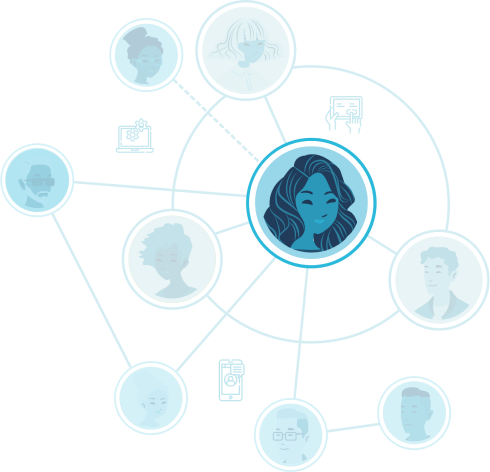Glossary


Developmental relationship
A developmental relationship is a close connection between a young person and an adult, or between a young person and a peer, that powerfully and positively shapes the young person’s identity and helps the young person to thrive.
Homophily
Homophily is the tendency for people to seek out and feel more connected to those who are similar to themselves, based on the notion that similarity breeds trust. Also known as the “birds of a feather flock together” phenomenon.
Inherited networks
Inherited networks are the social infrastructure (i.e. networks of family, friends, and community members) into which individuals are born and which forms around them.
Instrumental support
Instrumental support is tangible support (often contrasted with emotional support) such as help solving problems, financial help, and information and communications that help with educational and occupational goals.
Micro-internships
Micro-internships are short-term, paid, professional assignments that are similar to those given to new hires or interns.
Near peers
Near peers are individuals close in age and experience that can lend support and advice.
Opportunity gap
Opportunity gaps are disparities in access to quality schools, training programs, extracurriculars, work experiences, and resources needed for all young people to be academically, socially, and professionally successful.
Relationship decay
Relationship decay is the tendency of relationships—both strong and weak ties—to wane over time if they are not regularly maintained through communication and/or joint activities.
Social capital
Social capital is an individual’s relationships and networks, and the benefits that can potentially accrue by virtue of those relationships. For students, this means their access to and ability to mobilize connections that can help them further their potential and goals.
Strong ties
Strong ties are close relationships defined by high levels of time investment, emotional intimacy, trust, and reciprocity.
Structural diversity (of a network)
The structural diversity of a network is the degree of heterogeneity among an individual’s contacts as measured by those contacts’ own ties and membership in other networks.
Weak ties
Weak ties are relationships characterized by relatively less time, emotional intimacy, and reciprocity (as compared to strong ties). Research shows, however, that there is a strength of weak ties, in that they are more plentiful and more likely to contain new information and opportunities.
Web of support
A web of support is the collection of individuals within and outside the family that provides a young person with varying levels and types of support. Supporters may be adults or peers. All are connected to the young person, and may also be connected to one another through fo rmal or informal networks (for example, as members of a program cohort or an alumni group).
